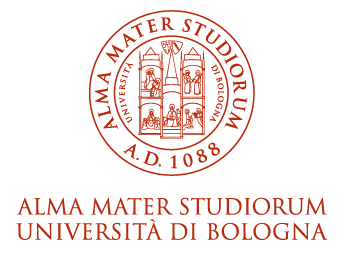- Docente: Achille Tarsitano
- Credits: 4
- SSD: MED/29
- Language: Italian
- Teaching Mode: In-person learning (entirely or partially)
- Campus: Bologna
- Corso: Single cycle degree programme (LMCU) in School of Dentistry (cod. 8204)
Learning outcomes
At the end of the course the student will learn the main knowledges in relations to the topographical anatomy of the facial leasions, of oncological, traumatological and malformative diseases of the maxillo-facial district. In more detail, the student: will possess specific knowledge of clinical pictures, semiological data, diagnostic imaging and therapy principles; she/he will be also able to perform a biopsy under local anesthesia for intraoral lesions; will possess the knowledge for the correct management of post-operative complications; she/he will know how to establish a profitable collaborative relationship between their future dental activity and maxillofacial pathologies.
Course contents
1. Malignant tumors of the oral cavity
Ø oral cavity squamous cell carcinoma (epidemiology, etiopathogenesis, clinic, diagnosis, staging, surgical treatment, principles of radiation and chemotherapy treatment, follow-up)
Ø Sarcomas of the cephalic district
2. Cranio-maxillofacial traumatology
Ø Emergencies in cranio-maxillofacial traumatology
Ø Soft tissue trauma
Ø Trauma of the facial skeleton
3. Inflammatory pathologies of the oro-maxillofacial soft and hard tissues
Ø Abscesses and odontogenic phlegmons
Ø Osteomyelitis
Ø Odontogenic sinusitis
Ø Osteonecrosis of the jaws
4. Cystic lesions of the maxillae
Ø Classification of endo-osseous cysts of the jaws
Ø Basic technique for the enucleation of endo-osseous maxillary cysts
Ø Marsupialization
5. Benign tumors of the oral cavity
Ø General principles of biopsy (incisional, excisional, needle aspiration)
Ø Benign odontogenic tumors
Ø Benign non-odontogenic tumors
Ø Other non-neoplastic lesions (epulids and fibropapillomas)
Ø General principles of differential diagnostics
Ø Treatment of benign odontogenic tumors
Ø Treatment of benign non-odontogenic tumors
6. Pathology of the salivary glands
7. Jaw bone growth abnormalities (orthognathic surgery)
Ø Etiopathogenesis of developmental anomalies of dentofacial deformities
Ø Diagnosis (clinical facial examination, oral and occlusal examination, temporomandibular joint, radiological and cephalometric examination, analysis of dental models)
Ø Treatment plan
Ø Pre- and post-operative orthodontics
Ø Types of deformities and their surgical treatment
Ø Dentofacial asymmetries
Readings/Bibliography
Trattato di patologia chirurgica maxillo - facciale
Autore: Sicmf - Societa' italiana di chirurgia maxillo - facciale , Editore: Minerva Medica , Edizione: 6/2007 , Volume: Unico
Manuale di Chirurgia Maxillo-facciale
Autore: Evaristo Belli
Editore: EPC Editore 2017
Teaching methods
Clinical cases presentation, surgical videos.
Assessment methods
The exam at the end of this course aims to evaluate the achievement of the educational objectives set out during the lessons according to the program of this particular course.
The student will be assessed to verify the achievement of the educational objectives by the person in charge of this particular course through an oral exam and presentation of a clinical case.
The purpose of the oral test is to verify the student's ability to apply their theoretical knowledge and make the necessary logical-deductive connections.
Grading of the final grade:
Preparation on a very limited number of topics covered in the course and analytical skills that emerge only with the help of the teacher, expression in overall correct language → 18-19;
Preparation on a limited number of topics covered in the course and ability to independently analyze only purely executive questions, expression in correct language → 20-24;
Preparation on a large number of topics covered in the course, ability to make independent choices of critical analysis, mastery of specific terminology → 25-29;
Exhaustive preparation on the topics covered in the course, ability to make autonomous choices of critical analysis and connection, full mastery of the specific terminology and ability to argue and self-reflect → 30-30L.
Teaching tools
Clinical cases on ppt support; surgical videos, anatomical models.
Office hours
See the website of Achille Tarsitano
